‘Tis the season…Desai Vada, Doodh Paak and Puri
Shravan, the 10th month of the Hindu calendar is the beginning of the festive Hindu season which ends with Diwali. This festival season is packed with many auspicious days, but some of my favorites are Divaso, Shitala Satam and Kali Chaudas. On those three days, we Anavil Desais, eat Desai Vada, Doodh Paak and Puri.
Desai Vada, known in my family as Anavil Vada, is a farsan made from fermented juwar and wheat flours. It has a very unique flavor and is one of my favoritest Anavil foods. You may recall from my earlier posts that Anavils, agriculturists who immigrated from Afghanistan and settled in South Gujarat, have a distinct micro cuisine and are proud to be food snobs. Though common Anavil surnames are Desai, Naik and Vashi, we’re popularly known as the Anavil Desai community. Thus these vadas, which you will not find in any other community, came to be known as Desai vadas. It is believed that some Anavils got the surname Desai when the first Moghul Emperor, Akbar came to Surat around 1570. He needed administrators and tax collectors for his newly conquered land, and selected some from Anavils, the predominant community around Surat and Valsad districts at the time. For their work, they were compensated ten percent of their collections. The surname Desai came about from the Persian word “dahshai” for tenth or the Vedic Sanksrit word “desh sai’ for landlord. Parsis, Muslims, Patidars were also selected for this job and as the Moghuls conquered further south, Desais came about in Maharashtra, Konkan, and Goa.
Back to these delicious Desai (or Anavil) vadas. As a kid, I remember whenever Ba, my paternal grandmother, made these vadas, she would store them in her kothar (pantry) on a large platter as we would enjoy them for 2-3 days after they were made. I would pretend to be busy doing some real work in her kitchen, sneak into the kothar when no one was looking, and plonk one of these delicious flavor and texture bombs in my mouth every 5 to 10 minutes. Ba was a quiet, introverted person who expressed her love for the family through her love for cooking. She had an exactness for cooking and would grind the flour from scratch in her kitchen ghanti so the vadas had a freshness and texture not replicable with store-bought flours. Being her only grandchild living in the same town where she lived (Baroda), until my brother was born many moons later, she fully indulged me with her delicious food. At other times, my mother, who quickly learnt our cuisine from Ba with her exceptional cooking skills after her marriage, would make these delicacies for us. My mom is also a very particular cook and goes to great lengths to ensure that everything is made right and tastes right. She or Ba would always make these vadas for Divaso, Shitala Satam and Kali Chaudas, or at any other times when one of us had a hankering for them.
Divaso, a vrat (fast) observed by married Gujarati women to pray for their husband’s health and longevity, heralds the arrival of Shravan mahino. Shitala Satam is observed in honor of Goddess Shitala, to provide protection from measles and smallpox. A common ritual is to avoid cooking food on that day. So Gujaratis prepare food on Randhan Chhat, the day before. Eating cold food in India is observed in many parts of India, especially during seasonal shifts, for its probiotic benefits which can help prepare the immune system for the next season. Desai vadas, which taste even better cold, lend themselves perfectly for both these rituals as they can be made the prior day without any concerns of spoilage or compromise to taste. In an Anavil home, a typical Shitala Satam menu is Desai vada, puri, kantola nu shaak, churma na laadu, and puran ni ghari which was my Ba’s speciality and is another favorite of mine. This ghari is made with puran (like in puran poli) and loaded generously with homemade safed makhan on top (yumm).
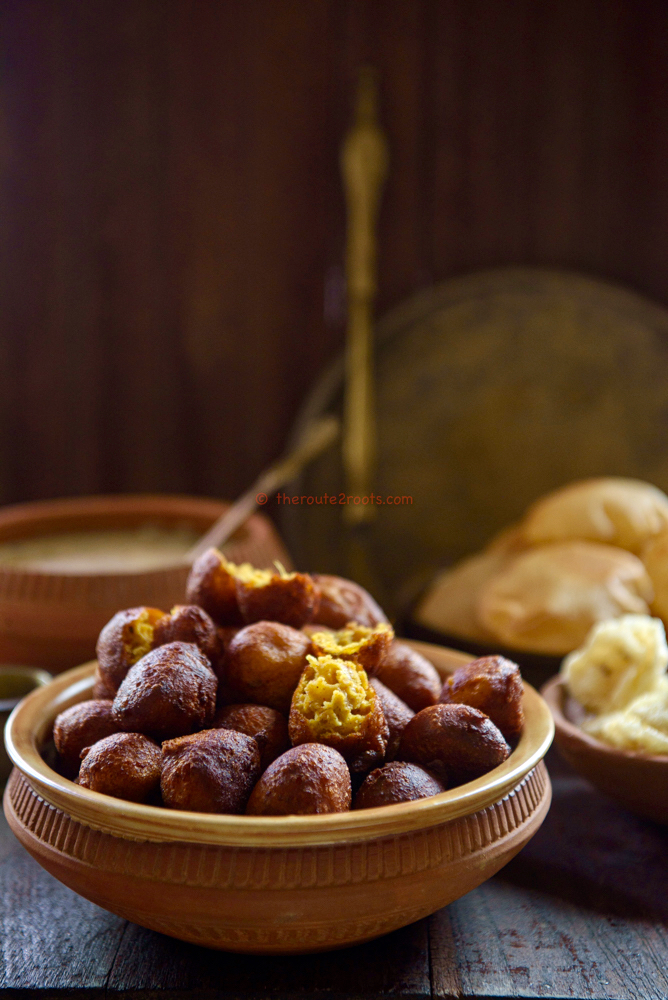
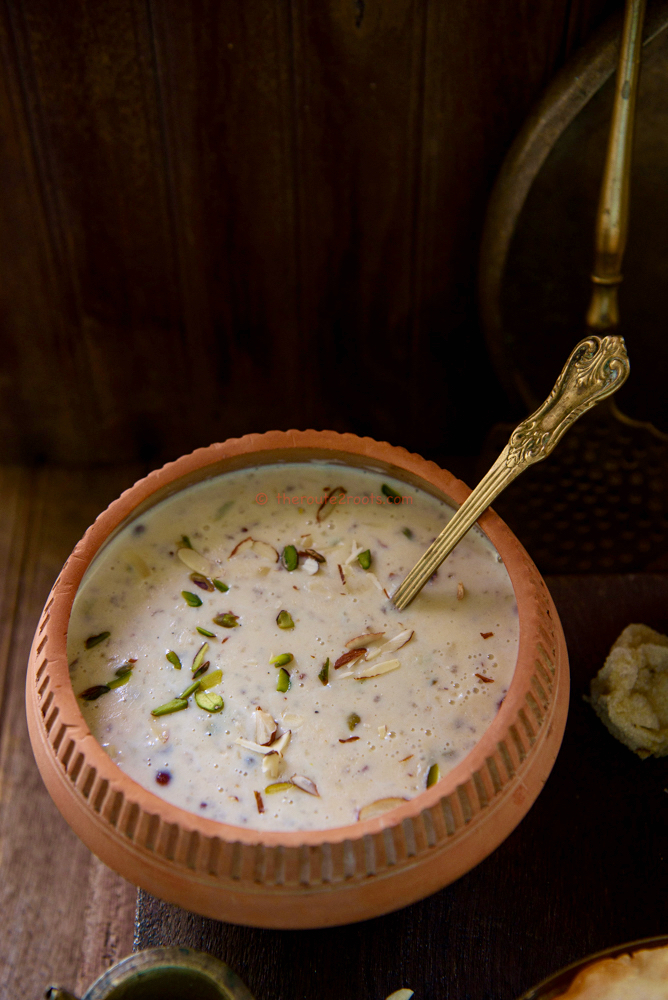
An ancestral Anavil tradition is to make a special doodh paak as an accompaniment for the typical Kali Chaudas feast. Gujaratis make doodh pak also during shradh or for a death anniversary as an offering to our forefathers, so we don’t forget their departed souls. Though it is made all over Gujarat and in other parts of India, what makes the Anavil doodh paak special is the use of a local unpolished red rice called ‘Kada na Chokhha’. This rice is widely grown in Valsad district, and is rich in an antioxidant called anthocyanin, which has antidiabetic, anticancer, anti-inflammatory, antimicrobial, and anti-obesity effects. At times, my mom will also use doodh malai or basmati rice (see her recipe below). Shantafoi, my dad’s aunt, in her highly sought-after doodh paak, would soak basmati rice for 30 minutes, and crush it lightly by hand before adding it to the boiling milk, along with a little ghee. Today, her daughter-in-law Shaktikaki, carries on that tradition. My aunt, Malvikafoi also crushes the soaked rice by hand, lets it dry a little and rubs it with ghee before adding it to the boiling milk.
Lastly, the puri is also different so it stays for a longer time – it’s made with a mix of rava and maida, with ghee and milk added to mix the dough and to keep it soft. An old Gujarati tradition on Kali Chaudas, called “kakraat kadhvanu” (getting rid of quarrels) is to put a small plate of puri, vada and doodh paak on the nearby cross street to be crushed by driving vehicles. This is done to get rid of negative energies and bring in peace for the new year, which is the day after Diwali for Gujaratis. It was also common practice for the daughter-in-law to return from her piyar (parents home) and bring back puri, anavil vada, and laadoo for her in-laws.
Hope you enjoy our vada, puri & doodh paak! Lots of gratitude to the 3-way partnership with my mom, Rekha Desai, who is documenting her recipes for this project and to Sheetal for giving us this opportunity to share our special micro cuisine with all of you and for testing and tasting the recipes. Also, to my aunts Geetafoi, Malvikafoi, and Shaktikaki, for sharing their stories and nuggets of wisdom for this post. And last, but not the least, to all of you the blog readers and Sheetal’s followers for your stories, comments, and for trying out our recipes.
Recipe from Rekha Desai:
Sources:
https://anavilsamajcanada.com/wp-content/uploads/2021/08/history.pdf
https://mayuris-jikoni.com/2013/11/18/333-doodh-pak/
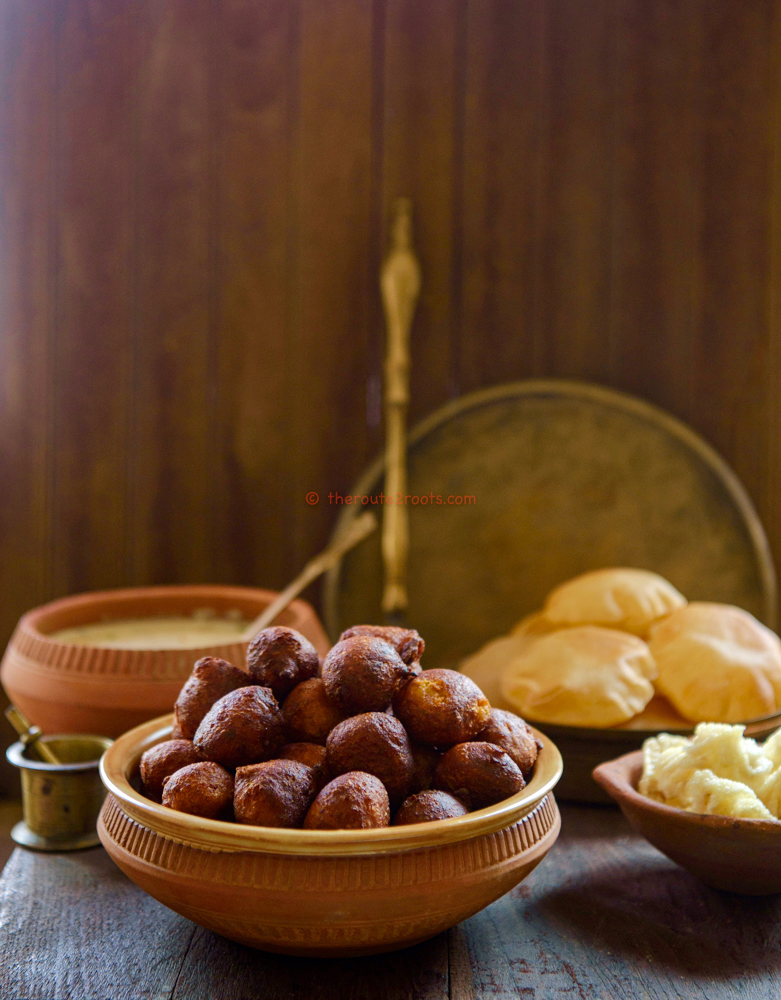
Desai Vada
Ingredients
- 1 cup Jowar/sorghum flour
- 1+1/4 cups whole wheat flour
- 4 tablespoons Urad dal/black gram lentils
- 2 tablespoons toor dal/pigeon peas lentils
- 4 teaspoons methi/fenugreek seeds
- 1.5 (approx) cups sour yogurt (thin)
- 3 tablespoons oil
- 1/2 teaspoon haldi/turmeric powder
- 1 teaspoon mirchi/red chilli powder
- 1/2 teaspoon hing/asafoetida
- 2 tablespoons green chilli and ginger paste (increase the chilli paste if wish)
- 1 tablespoon jaggery
- salt to taste
- oil for deep frying
- 1/2 teaspoon baking soda
Instructions
To being dry roast urad dal, toor dal and methi seeds until pale brown and fragrant. Keep the flame low.
once the mixture cools, in a dry grinder, grind to a coarse powder.
In a large mixing bowl, bring together the jowar flour, whole wheat flour and the coarsely ground dal mixture.
Add the 3 tablespoons oil to the flours and mix it well. Gradually, begin to add the sour yogurt.
Continue to add the yogurt until you achieve soft dough. Take care you do not add too much liquid that would turn it into batter (it should be doughy consistency). Add 1/4 teaspoon baking soda and mix it well.
Cover and set the dough to ferment for at least 6-7 hours. The idea is to allow the dough has to develop sour taste.
Once the dough has fermented , add turmeric powder, red chilli powder, jaggery, asafoetida, green chilli + ginger paste and salt.
Mix very well.
Now add couple of tablespoons of yogurt to bring the dough to dropping consistency.
Meanwhile heat enough oil in a large kadai for deep frying the Vada.
Add a pinch of soda to the vada batter and over it pour a generous tablespoon of hot oil.
Beat the batter well to incorporate some air into it.
Now, pinch in batter with four fingers and using your thumb push it into hot oil. Repeat until you have 4-5 vada in the kadai.
Keep stirring and continue to fry on medium flame.
remove the vada from oil once they are medium brown on the outside.
Drain on absorbent paper.
Repeat the above step of deep frying until the you finish the batter.
Serve Desai Vada hot or at room temperature with Puri and Doodhpaak.
Kada na Chokha no Doodhpak
Ingredients
- 1 litre milk
- 3 tablespoons Kada na Chokha
- 1/4 cup sugar (more or less to your taste)
- 1/2 elaichi powder
- 1 tablespoon almond slivers
- 1 tablespoon pistachio slivers
Method:
- Wash and soak the rice for 1 hours.
- In a thick bottom saucepan, add the milk and bring it to boil over medium heat.
- Once the milk comes to boil, drain the rice and add to the milk.
- Continue to cook the rice on slow flame. Initially, keep stirring it continuously.
- Ensure that the milk does not overflow or stick to the bottom. Give it a frequent stir.
- Once the rice is cooked, add the sugar.
- Consider the Doodhpak done when the milk turns pale pink.
- Add half the amount of slivered almonds and pistachios.
- Cook for couple of minutes.
- Turn off the flame.
- Serve the Doodhpak cold with final flourish of slivered almonds and pistachios.


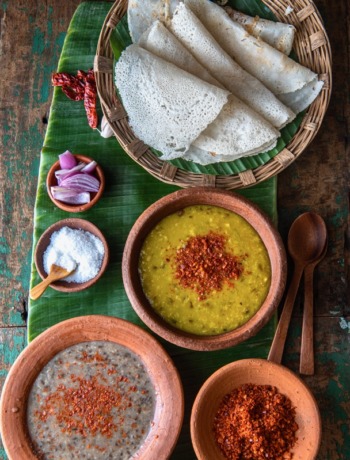
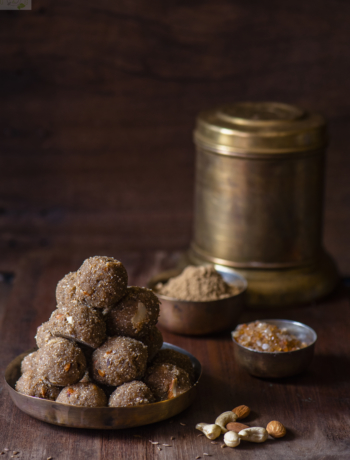
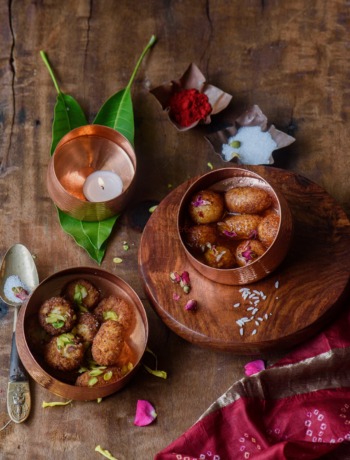
6 Comments
Malini Patel
November 7, 2021 at 9:03 pmHi
Nice to read about dudhpak and vada, traditional anavil sweet and savoury.
Well described.
Our dudhpak made of pounded kada na chokha is unbeatable.
As a child and as a grown up it has remained my favourite sweet and I start eating it right from when it is ready till the last year spoon is left over in the fridge for a couple of days.
Aanal Bhatt
February 27, 2023 at 7:11 pmThank you & lovely memories! Thanks for sharing!!
Aanal Bhatt
February 27, 2023 at 7:15 pmThanks Malini. And lovely memories… thanks for sharing!
Fatima
February 27, 2023 at 3:48 amHi Sheetal what an amazing blog about the traditions of our elders nothing compares with that in todays modern world. Would love to make the dudh paak but can I substitute with basmati rice? And how do I use basmati? Sorry I live in England so no idea how I get the kada na chokha. Thanks
Sheetal
February 27, 2023 at 9:26 amThank you so much Fatima for this lovely message. I would refrain from using Basmati. Doodhpaak and kheer need gelatinous rice, so choose any short-grained aromatic rice instead. Jasmine rice from any Asian store will work too. Hope this helps! And thank you so much for stopping by.
Aanal Bhatt
February 27, 2023 at 7:14 pmFatima, you can also try with red rice which you should be able to obtain at a health food store or on Amazon.